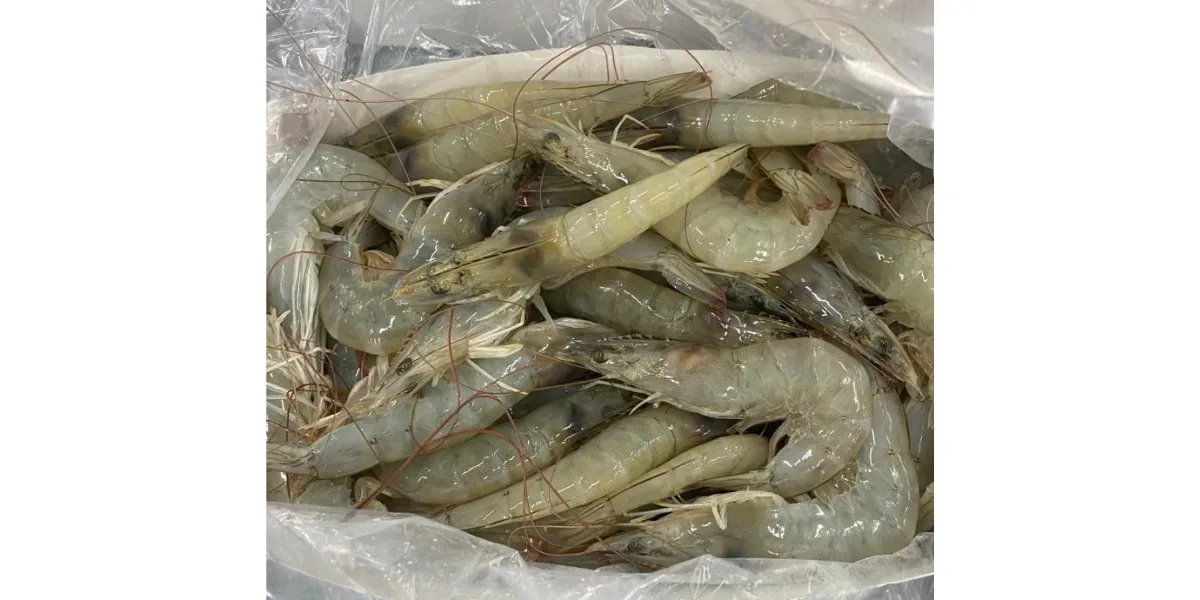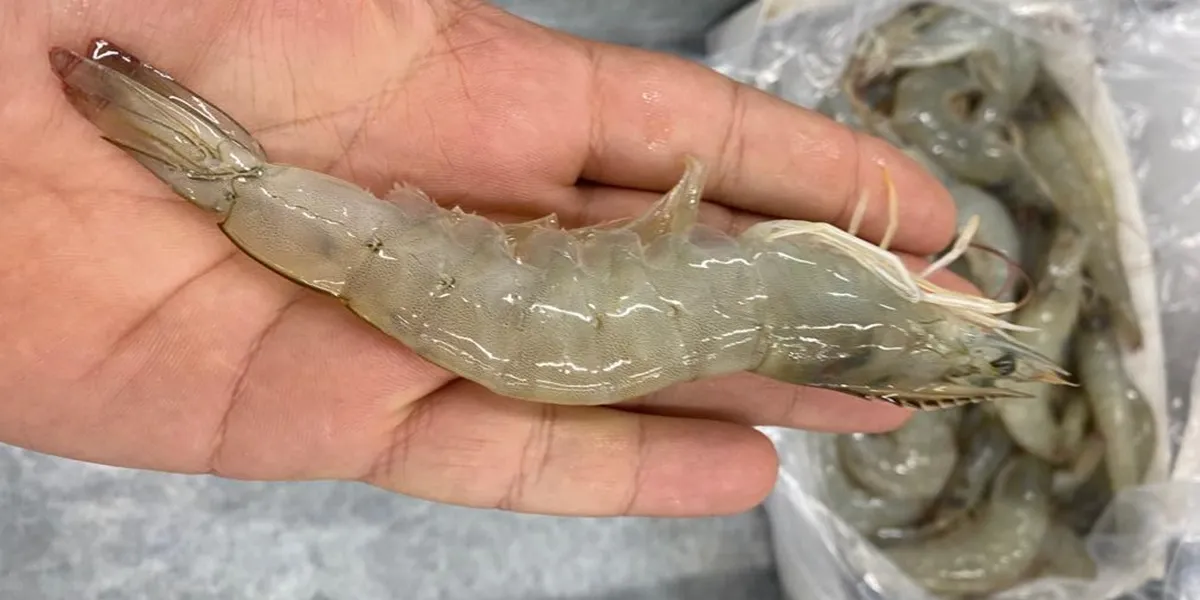Iran’s coastal waters are home to a surprisingly rich tapestry of shrimp species, each playing a vital role in marine ecosystems and the national economy. From the warm shallows of the Persian Gulf to the nutrient-rich estuaries of the Gulf of Oman, the types of shrimp species found in Iran reflect a unique blend of native biodiversity and aquaculture innovation. These species are not only crucial for ecological balance but also serve as a backbone for Iran’s growing seafood export industry.
Understanding the types of shrimp species in Iran—whether wild-caught or farmed—is essential for researchers, seafood producers, and environmental planners alike. With recent advances in taxonomy, genetics, and sustainable farming, Iran is emerging as a key player in regional shrimp production. This article explores the most important shrimp species in Iran, their habitats, commercial value, and ecological significance.
If you’re curious about how shrimp farming intersects with biodiversity—or simply want to know which species thrive in Iranian waters—keep reading. You’re about to dive into a world where science meets sustainability.
Introduction: Why Iran’s Shrimp Biodiversity Matters
Iran’s southern coastline, stretching along the Persian Gulf and Gulf of Oman, is home to a diverse range of shrimp species that play a vital role in both marine ecosystems and the national economy. The types of shrimp species found in these waters are not only ecologically significant but also commercially valuable, supporting thousands of jobs in fishing, farming, and export industries.
Organizations like Pishva Holding have been instrumental in advancing shrimp aquaculture in Iran by investing in sustainable farming practices and species research. Their efforts have helped position Iran as a regional leader in shrimp production, particularly in the cultivation of high-yield species like Penaeus vannamei.
Understanding the types of shrimp species in Iran is essential for managing biodiversity, improving aquaculture yields, and ensuring long-term sustainability. From native burrowing shrimp to exotic farmed varieties, each species contributes uniquely to the country’s aquatic wealth.
This article explores the most important shrimp species in Iran, their habitats, and their economic roles. Whether you’re a seafood exporter, marine biologist, or policy maker, this guide offers valuable insights into Iran’s shrimp sector.
Native Shrimp Species Found in Iranian Waters
Iran’s native shrimp species are a cornerstone of its marine biodiversity. These species have adapted over centuries to the unique salinity, temperature, and sediment conditions of the Persian Gulf and Gulf of Oman. Among the most notable native types of shrimp species are Metapenaeus affinis and Parapenaeopsis stylifera, both of which are commonly found in shallow coastal waters.
These native species are important for ecological balance and are often harvested by small-scale fisheries. Their resilience to local environmental stressors makes them valuable for sustainable fishing practices.
Key native species include:
| Scientific Name | Common Name | Habitat |
| Metapenaeus affinis | Jinga shrimp | Persian Gulf, estuaries |
| Parapenaeopsis stylifera | Kiddi shrimp | Coastal muddy bottoms |
| Penaeus semisulcatus | Green tiger shrimp | Deeper offshore waters |
Many Iranian Shrimp Supplier & Wholesale companies are beginning to recognize the market potential of these native species, especially in niche and eco-conscious markets. Their unique flavor profiles and adaptability to organic farming methods make them attractive to international buyers.
Preserving and promoting native types of shrimp species is not just about conservation—it’s a smart economic strategy for long-term growth.

Commercially Important Shrimp Species in Iran
Iran’s shrimp industry has seen rapid growth in recent years, largely driven by the farming of high-yield, fast-growing species. The most commercially important among these is Penaeus vannamei, also known as the Pacific white shrimp. Originally native to the Pacific coast of Latin America, this species has been successfully introduced to Iran due to its adaptability and high market demand.
Other species like Penaeus monodon (giant tiger prawn) and Fenneropenaeus indicus (Indian white shrimp) are also cultivated, though on a smaller scale.
Here’s a quick comparison:
| Species Name | Growth Rate | Disease Resistance | Market Demand |
| Penaeus vannamei | High | Moderate | Very High |
| Penaeus monodon | Moderate | Low | High |
| Fenneropenaeus indicus | Moderate | High | Moderate |
When Comparing the quality of Iranian shrimp with other exporting countries, Iranian shrimp often stands out for its clean taste, firm texture, and sustainable farming practices. These qualities are increasingly valued in European and East Asian markets.
Understanding the types of shrimp species that dominate Iran’s commercial sector is key to navigating both domestic production and global trade opportunities.
Burrowing Shrimp Species of the Persian Gulf and Gulf of Oman
Burrowing shrimp species, particularly those from the infraorders Axiidea and Gebiidea, are essential to the benthic ecosystems of the Persian Gulf and Gulf of Oman. These types of shrimp species are not typically harvested for food but play a critical role in sediment turnover, nutrient cycling, and habitat formation for other marine organisms.
Recent studies have identified several key species in Iranian waters, including:
- Corallianassa martensi – First recorded in Iran in 2019
- Michaelcallianassa persica – Endemic to the region
- Aqaballianassa ehsani – Found in soft sediment zones
These species create complex burrow systems that oxygenate the seafloor and support biodiversity. Their presence is often an indicator of a healthy marine environment.
Although not commercially exploited, burrowing shrimp are increasingly studied for their ecological value. Marine biologists and environmental planners are beginning to include these species in conservation strategies, especially in areas affected by coastal development or aquaculture expansion.
Recognizing the ecological importance of these lesser-known types of shrimp species is crucial for maintaining the health of Iran’s marine ecosystems.
Shrimp Farming in Iran: Techniques and Regional Trends
Shrimp farming in Iran has evolved significantly over the past two decades, with a strong focus on sustainability and yield optimization. The dominant species in aquaculture is Penaeus vannamei, thanks to its rapid growth and adaptability to intensive farming systems.
Key farming regions include:
Bushehr Province – Known for large-scale pond systems
Hormozgan Province – Focused on semi-intensive methods
Khuzestan Province – Emerging as a hub for recirculating aquaculture systems (RAS)
Modern techniques used in Iran include:
- Aerated pond systems with automatic feeders
- Biosecurity protocols to prevent disease outbreaks
- Selective breeding for improved growth and resistance
According to recent research from the Iranian Fisheries Science Research Institute, optimizing stocking density and aeration rates has led to significant gains in productivity.
These advancements are helping Iran compete in global markets while reducing environmental impact. As demand for responsibly farmed seafood grows, Iran’s shrimp sector is well-positioned to expand.
Understanding the farming techniques behind different types of shrimp species is essential for anyone involved in aquaculture, from investors to environmental regulators.
Genetic Evaluation and Breeding Programs
Genetic evaluation plays a pivotal role in improving the performance and resilience of different types of shrimp species in Iran. With the increasing demand for disease-resistant and fast-growing shrimp, selective breeding programs have become a cornerstone of modern aquaculture.
In Iran, research centers like the Iranian Fisheries Science Research Institute have initiated genetic mapping projects for both native and exotic shrimp species. These programs focus on:
- Enhancing growth rate and feed conversion efficiency
- Improving resistance to common pathogens like white spot syndrome virus (WSSV)
- Preserving genetic diversity in native species
A typical breeding cycle involves:
| Stage | Objective |
| Broodstock selection | Identify high-performing individuals |
| Genetic screening | Detect desirable traits |
| Controlled mating | Ensure trait inheritance |
| Performance testing | Monitor growth and survival rates |
By applying molecular tools such as microsatellite markers and SNP analysis, scientists can track lineage and avoid inbreeding. This ensures long-term sustainability and productivity.
Understanding the genetic potential of various types of shrimp species allows Iranian producers to compete globally while maintaining ecological balance. As breeding programs expand, Iran is poised to become a leader in shrimp genetics in the region.
Environmental Impact and Sustainability Concerns
As shrimp farming expands across Iran’s southern provinces, environmental sustainability has become a pressing concern. The types of shrimp species cultivated—especially high-density species like Penaeus vannamei—can exert pressure on local ecosystems if not managed properly.
Key environmental challenges include:
- Effluent discharge leading to eutrophication
- Mangrove deforestation for pond construction
- Disease outbreaks due to poor biosecurity
- To address these, Iran has adopted several eco-conscious strategies:
- Use of biofloc systems to recycle nutrients
- Implementation of sediment traps and water treatment units
- Promotion of integrated multi-trophic aquaculture (IMTA)
Sustainability certifications such as ASC (Aquaculture Stewardship Council) are also gaining traction among Iranian producers aiming for export markets.
Here’s a quick comparison of farming practices:
| Practice Type | Environmental Risk | Sustainability Score |
| Traditional ponds | High | Low |
| Biofloc systems | Low | High |
| RAS (closed systems) | Very Low | Very High |
Balancing production with environmental stewardship is essential. By choosing the right types of shrimp species and farming methods, Iran can ensure long-term viability of its aquaculture sector.
Export Potential and Global Market Position
Iran’s shrimp industry has grown into a major export sector, with the country shipping thousands of tons annually to markets in China, the UAE, and parts of Europe. The types of shrimp species most commonly exported include Penaeus vannamei and Fenneropenaeus indicus, both prized for their texture and flavor.
Iranian shrimp is often praised for its:
- Low antibiotic residue levels
- Clean taste and firm texture
- Competitive pricing
When comparing Iran’s shrimp to other major exporters like India, Ecuador, and Vietnam, several advantages emerge. According to recent trade reports:
| Country | Avg. Export Price (USD/kg) | Antibiotic Compliance | Market Access |
| Iran | 5.20 | High | Moderate |
| India | 4.80 | Medium | High |
| Ecuador | 5.50 | High | High |
Efforts to improve branding and traceability are underway, with support from government agencies and private exporters. Iran’s strategic location also allows for efficient shipping to both Asian and European markets.
Understanding the types of shrimp species that perform best in export scenarios is key to strengthening Iran’s global seafood footprint.
Scientific Recommendations for Future Research
To ensure the long-term success of Iran’s shrimp industry, targeted scientific research is essential. While current efforts have focused on farming and disease control, future studies must explore broader ecological and genetic dimensions of various types of shrimp species.
Key research priorities include:
- Mapping the full biodiversity of native shrimp species
- Studying the impact of climate change on shrimp habitats
- Developing probiotic-based disease prevention strategies
- Exploring alternative feed sources to reduce reliance on fishmeal
Collaborations with international marine research institutes can accelerate progress. For example, joint studies with FAO-backed programs have already yielded insights into shrimp larval development and water quality optimization.
Suggested research roadmap:
| Focus Area | Goal |
| Genomics | Identify resilient genetic traits |
| Nutrition | Develop cost-effective feed formulas |
| Ecosystem modeling | Predict farming impact on biodiversity |
| Disease surveillance | Early detection of viral outbreaks |
By investing in science-driven aquaculture, Iran can unlock the full potential of its diverse types of shrimp species while safeguarding marine ecosystems.
Preserving Iran’s Shrimp Diversity for Future Generations
Iran’s shrimp industry stands at a crossroads—rich in biodiversity, yet facing the challenges of sustainability and global competition. The types of shrimp species found in Iranian waters, from native burrowers to high-yield farmed varieties, represent both ecological heritage and economic opportunity.
Preserving this diversity requires a multi-pronged approach:
- Strengthening breeding programs to protect native genetics
- Enforcing environmental regulations in farming zones
- Promoting research and innovation in aquaculture practices
- Expanding market access through quality assurance and traceability
The future of Iran’s shrimp sector depends not just on production volumes, but on how responsibly those volumes are achieved. With the right policies and scientific backing, Iran can become a model for sustainable shrimp farming in the region.
For seafood exporters, marine scientists, and policymakers alike, understanding the types of shrimp species in Iran is more than a technical detail—it’s a strategic imperative. The choices made today will shape the health of Iran’s coastal ecosystems and the livelihoods of future generations.
Conclusion: Why Shrimp Species Matter—From Biodiversity to Business
Shrimp may be small, but their impact on Iran’s marine economy and ecological health is enormous. The types of shrimp species found across Iran’s southern coasts—from native burrowing varieties to commercially farmed giants like Penaeus vannamei—offer a window into the country’s aquatic potential. These species not only support thousands of livelihoods but also contribute to global seafood markets, making Iran a rising star in sustainable aquaculture.
As climate change and overfishing threaten marine biodiversity worldwide, Iran’s approach to shrimp farming and species conservation could serve as a model for other nations. By investing in genetic research, habitat protection, and responsible farming practices, Iran is laying the groundwork for long-term resilience in its shrimp sector.
Whether you’re a marine biologist, seafood entrepreneur, or policy maker, understanding the types of shrimp species in Iran is more than academic—it’s a strategic necessity. The journey doesn’t end here. Explore the full article to uncover species profiles, farming techniques, and ecological insights that shape Iran’s shrimp story.
FAQ
1. What are the most common types of shrimp species in Iran?
The most common include Penaeus vannamei, Fenneropenaeus indicus, Metapenaeus affinis, and Parapenaeopsis stylifera.
2. Are native shrimp species still harvested in Iran?
Yes, especially by small-scale fisheries. They are valued for their unique taste and ecological resilience.
3. Is Iranian shrimp competitive in global markets?
Absolutely. Iranian shrimp is known for its clean taste, low antibiotic use, and competitive pricing.
4. What sustainability measures are used in shrimp farming?
Biofloc systems, water recycling, and integrated aquaculture are among the key practices.
5. How is Iran improving its shrimp genetics?
Through selective breeding, genetic screening, and collaboration with research institutes.




